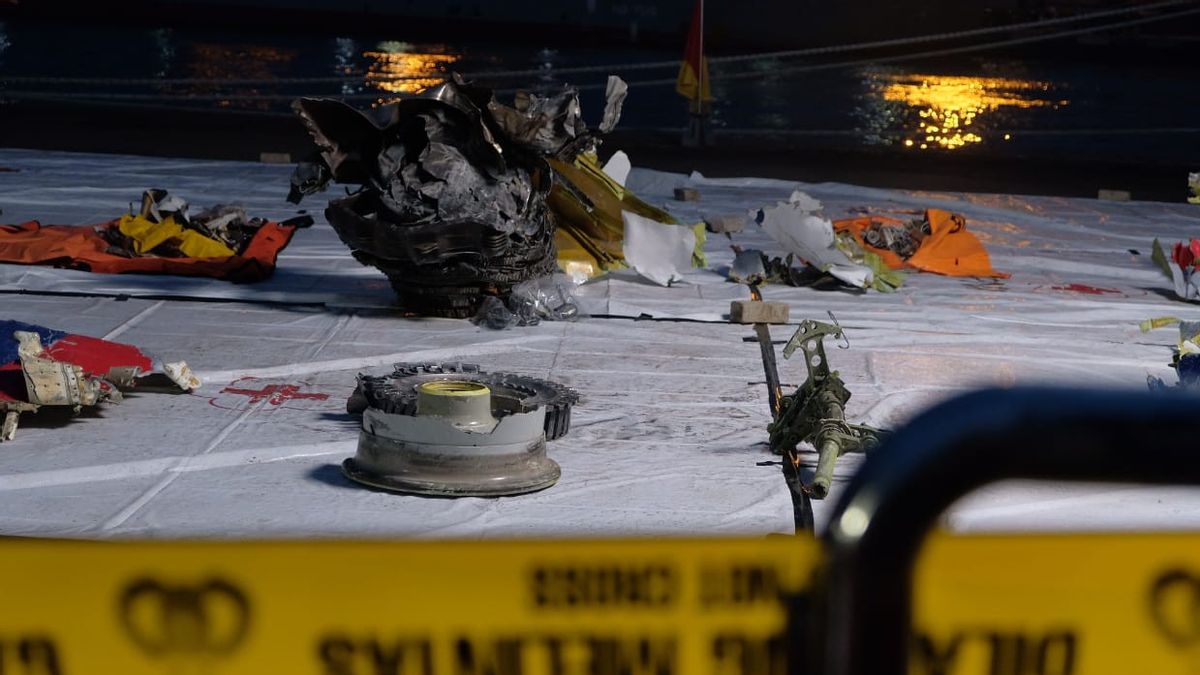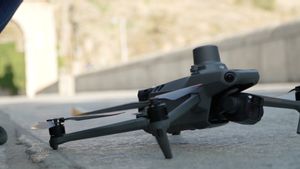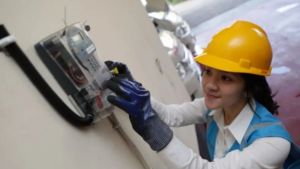JAKARTA - The search for Sriwijaya Air SJ-182 finally bore fruit. The signal from the black box or black box from the Boeing 737-500 plane that crashed in the waters of the Thousand Islands, Jakarta on Saturday (January 9, 2021) was found by the ping locator. The signal is at a depth of 23 meters below sea level.
The black box, which consists of the Flight Data Recorder (FDR) and Cockpit Voice Recorder (CVR), is expected to solve the mystery of the crash of the plane flying from Jakarta to Pontianak.
The black box can be found using several sophisticated equipment, one of which is the Multibeam Echosounder. This tool is also used to track the fuselage, which until now has not been completely found.
What is Multibeam Echosounder?
The Multibeam Echosounder (MBES) is a water depth meter that uses the same principles as the Singlebeam Echosounder (SBES), which uses a single beam as the sender and receiver of sound wave signals.
The main difference between SBES and MBES is in the number of beams emitted. SBES only emits one sound emission (beam) at one point along the survey line, while MBES emits more than one beam to get many points of depth in one acoustic wave emission.
In contrast to the SBES, the MBES beam pattern is broad and transverse to the hull. So that when the ship moves, it produces a sweep of the sea floor area. The range is quite wide, 150 meters left and 150 meters right.

This tool is a development of the Singlebeam Echosounder and is used to obtain an overview or model of the surface shape (topography) of the bottom of the waters.
Indonesian Navy Chief of Staff Admiral Yudo Margono said that the mapping of the black box signal area of the Sriwijaya Air SJ-182 aircraft had been narrowed. Yudo said that his party used a sonar transmitter or Multibeam Echosounder from the start of the mapping.
"From the results of the multibeam, we have mapped it turns out that there is only one triangle area, namely 140x100 meters. Hopefully, with this area, divers will be more focused," he said on KRI Rigel-933, Monday (January 11, 2021).
Like other sonar systems, the multibeam system emits sound waves in a fan-like form under the hull.
The working principle of MBES is based on pulses emitted directly towards the seabed and after that the acoustic energy is reflected back from the seabed, some sound emission electronically is formed using signal processing techniques so that the beam angle is known.
MBES can produce bathymetric data with high resolution (0.1 m vertical accuracy and less than 1 m horizontal accuracy).
Bathymetry is the study of the depth of lake or ocean floor water. In other words, bathymetry is the equivalent of underwater hypipsometry.
The use of this technology is also very helpful in the search for new fish resources, so that it will accelerate decision making or policies, especially to determine fishing areas so that fish potential can be maintained.

Another search tool used is Side Scan Sonar (SSS). This tool can help detect sound, and detect the size and size of particles that make up the sea floor. Detection of rock, mud, sand, gravel, or other types of bottom waters.
The side scan sonar used is the Edgetech 4125 type. This technology is also used for fisheries research, dredging operations and environmental studies and can also detect mines.
Apart from MBES and SSS, Basarnas also uses other sophisticated search tools, namely ROV (Remotely Operated Underwater Vehicle).

The ROV is an unmanned underwater vehicle operated by remote control capable of diving to a depth of 1,000 meters or being dragged by boat.
The ROV is equipped with a power source to turn on the lights and the sensor camera it carries. Meanwhile, to improve performance capabilities, ROV is usually attached with a number of other additional equipment.
Among them are magnetometers for measuring the magnetization of magnetic materials, manipulators or arms for cutting objects and taking water samples, to instruments for measuring water clarity, light penetration and temperature.
This completeness can be found in the ROV that has been developed with the latest technological capabilities. The ROV used in this search operation is type H800.
The H800 is included in the ROV category for observation and light duty work. This type of underwater robot is capable of diving to a depth of 1,000 meters.
The English, Chinese, Japanese, Arabic, and French versions are automatically generated by the AI. So there may still be inaccuracies in translating, please always see Indonesian as our main language. (system supported by DigitalSiber.id)













